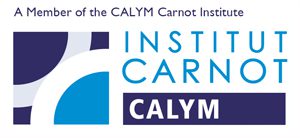The team’s scientific project focuses on characterising the molecular and cellular mechanisms governing the development of lymphomas, in particular T lymphomas derived from follicular helper T cells (led by angio-immunoblastic T lymphoma) and cutaneous T lymphomas, and Schwann cell-derived tumours in neurofibromatosis 1 (NF1), two cancer models characterised by the accumulation of sequential genetic alterations that are still incompletely known and for which no effective treatment is currently available.
The team is rich in internationally recognized principal investigators in the fields of T-cell lymphoma oncogenesis (Pr Philippe Gaulard, Dr François Lemonnier), including cutaneous lymphomas (Pr Nicolas Ortonne), the study of early events in hematopoietic progenitors (Pr Wagner Ballon and Dr Ivan Sloma), translational research on T and B lymphomas (Pr Marie-Hélène Delfau, Pr Corinne Haioun), and neurosciences and Neurofibromatosis 1 (Pr Pierre Wolkenstein and Pr Benoît Funalot), with particular expertise in NF1 mouse models (Pr Piotr Topilko).
The team is interested in the nature and functional consequences of the molecular alterations characterising tumour cells, paying particular attention to the hierarchy of genetic events, the nature of the cells involved in the initiating events, their phenotypic aberrations and the interactions of tumour cells with their environment. The molecular analyses we are currently conducting benefit from innovative technologies, such as single cell sequencing, which we have recently applied to the study of both cancer models. We are also developing in vitro and ex vivo proofs of concept for new therapeutic approaches, taking advantage of the study of lines, primary cells and mouse models. Recently, our studies in the field of T-cell lymphoma have led to the initiation of a therapeutic trial (ORACLE – ClinicalTrials.gov Identifier: NCT03593018).
The ultimate aim of these projects is to identify new therapeutic targets based on chemical inhibitors or monoclonal antibodies, which will make it possible to improve patient care.
The work is based in particular on :
– Cohorts of annotated patients from the Neurofibromatosis reference centre directed by Pr Pierre Wolkenstein or included in the LYSA trials (Lymphoma Study Association; C Haioun and MH Delfau members of the board);
– The collections of tumour samples available on the Henri Mondor site, conserved in the biological resource platform, in connection with national expertise networks (and Lymphopath network labelled by the INCa, directed by Pr Philippe Gaulard), established from national research projects (PHRC TENOMIC (PI P. Gaulard) and KIRs (PI N Ortonne),…), or prospective (collection of cutaneous lymphomas, LYCUT) ;
– Interactions with national and international academic partners and research funding agencies, including an international project funded by the Leukemia Lymphoma Study Association (LLS) for T-cell lymphomas and the Neurofibromatosis Therapeutic Acceleration Program NTAP consortium for NF1, in close collaboration with Johns Hopkins University in Baltimore (Maryland, USA);
– Industrial partnerships/collaborations (partly through the Carnot CALYM Institute for Lymphomas) which have led to the establishment of collaboration contracts with pharmaceutical laboratories;
– The establishment of mouse models developed by the team (genetically modified NF1 mice and PDX-type xenograft mice). In particular, several members of our team, under the responsibility of Pr Piotr Topilko, are basing a large part of their research on the recently established NF1 mouse model which has already made it possible to identify the cells of origin of human neurofibromas during NF1. This offers the unique advantage of summarising most aspects of human disease, particularly with regard to Schwann cell-derived tumours.
Areas of research :
- Characterisation of the cells of origin, molecular alterations and oncogenic mechanisms involved in T lymphomas and Schwannian tumours of Neurofibromatosis 1.
- New therapeutic targets targeting tumour cells and the environment of T lymphomas and NF1 tumours
Key words :
oncogenesis, T lymphomas, neurofibromatosis 1


